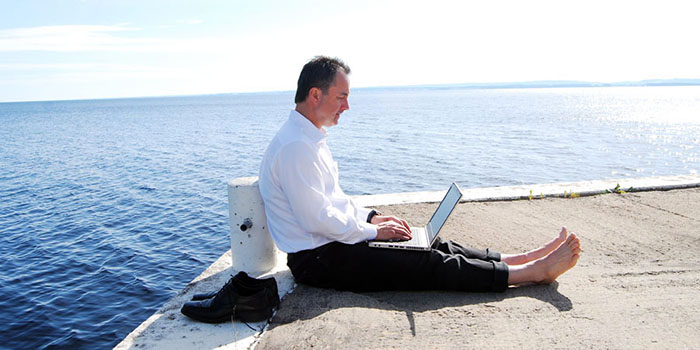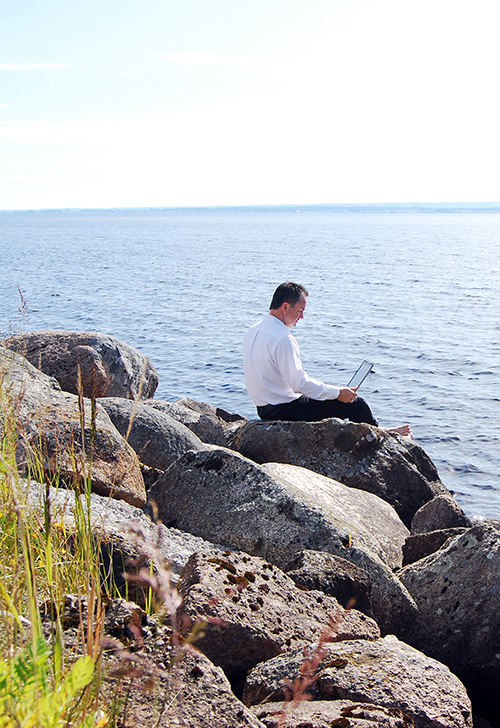
Creative Light Planning
The message from the research is clear; if you light your premises in the right way, you achieve a working environment in which people feel at ease and think better. All you need is knowledge and good luminaires. Tommy Govén, head of research at Fagerhult, has identified the link between light and creativity.
Does light really make us more creative?
Research has shown this really is true. In 2009, we conducted a study at a primary school in London, in partnership with University College London and the Faculty of Engineering (LTH) at Lund University. We weren’t satisfied with simply finding out how the pupils felt, but also gathered biological evidence in the form of cortisol measurements. The results showed that the pupils in the classrooms which were lit with a higher proportion of ambient light, i.e. more light on the walls and ceiling, actually performed better and got higher marks.
In a room which is perceived as being bright, without dazzling us, we become more productive. Even if productivity shouldn’t be confused with creativity, the link is obvious. In a room with poor lighting, which is inadequate or dazzling, the effect is the opposite. We become tired, unproductive and – in the worst case scenario – aggressive.

Is the basis of this ambient light?
Yes! The fact that we become more alert and happier when there is light around us goes without saying for most people. The best thing for us is the natural light, which is in fact a type of ambient light. The ‘light norm’ of humans is the celestial sphere, which extends from the ground towards the horizon and then upwards. Yet we rarely look directly at the sun because it is unpleasant to do so and we are dazzled by the glare.
Instead, we absorb the light which arrives vertically, from the side and just above us. By planning the artificial light in an office in a similar way – allowing it to bounce off indirectly from walls and ceilings – we can achieve the same effect.
Why are LEDs so good in the office?
LED technology has undergone incredible developments in terms of not only light quality, anti-glare and efficiency but also price. Now the technology has matured we wanted to find out what people think of LEDs compared to a traditional T5 light source. In our latest study with the Faculty of Engineering (LTH), at Lund University, we built two identical office rooms which were both equipped with direct light above the workstation and supplementary ambient light on the walls. In one of the rooms we used LED lighting and in the other T5.
The result was very clear: the LED light was perceived as being brighter and more pleasant with ambient lighting of 100 cd/m2, a feeling which persisted right up to 300 cd/m2. Consequently, when using LED lighting in an office you achieve a brighter and better working environment while at the same time reducing your energy consumption. You could say that you get creativity for free!
Are LEDs creative in other ways?
In addition to having a better lit environment, which is perceived as being more attractive, LED technology provides more opportunities for variation and style. You can alter the light’s colour temperature within the white field, known as ‘tunable white’, over the course of the day, depending on the daylight outside or according to your own daily routine. With LEDs it’s possible to use an ‘equaliser’ for the light, just like with music, following the same principle that every office and space can have their own, individual tone.
Another clear advantage is that you can work with coloured light and create accents and effects in the office design and also project different types of images. With LEDs the light really does become an integrated part of the interior design.